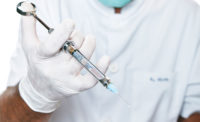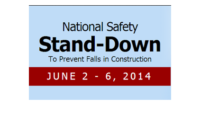March 2015 research from the Association of American Medical Colleges confirms that the projected physician shortage is “real and significant.”1 The AAMC projects a shortage between 46,000-90,000 physicians by 2025.
Associated problems
More doctors are needed to address chronic health conditions of the aging population. Shortages of some medical practice specialties — occupational physicians — may have more severe shortages. Fewer occupational docs with special talents such as knowing the proper return-to-work restrictions may drive up workers’ compensation (WC) costs. The Affordable Care Act (ACA) is drawing more users into the medical system. High ACA deductibles may drive to people to falsely use the WC system. Conditions that impact physician shortages, such as baby boomer retirements, also impact the occupational safety and health workforce. NIOSH predicted a shortage of OSH pros back in 2011.2 Lack of seasoned pros may result in higher workplace injury and illness rates.
Is your workplace ready to deal with these problems?
Do OSH pros know how to benefit from the pressures these shortages cause?
Evaluate physician talent
Many people give too high praise to all physicians. Some are great. Others are average. And some shouldn’t be practicing medicine. It’s all too easy to fall into the talent trap. After all, the MD/DO credentials are top of the heap. OHS pros who have been in the trenches for a while understand, however, that quality is uneven.
Here’s an example:. While serving as an expert witness in an occupational disease claim I came across a report from an MD that didn’t make sense. Based on the claimant’s pulmonary function results, the claimant shouldn’t have been able to walk and talk without gasping for air. But I’d seen the claimant’s rant and rave antics in court. He had good lungs.
Turned out the MD diagnosed the claimant’s lung function from only one spirometry tracing. To be valid, a minimum of three tracings, all within five percent of each other, are needed. It’s easy to fake one tracing. Since I had administered hundreds of pulmonary function tests in my career, our lawyer qualified me as an expert in that field and the MD’s results were tossed out of court.
The problem of shoddy MD work is, unfortunately, not uncommon. The American College of Occupational and Environmental Medicine’s Guide to High Value Physician Services may help you select the best physician for your workplace OHS services.3
Evaluate mid-level talent
Physicians are top-level medical talent. One strategy to address the coming physician shortage is to use mid-level healthcare practitioners such as physician assistants (PA) and registered nurses (RN) to provide primary care within the scope of their abilities. Laws are popping up to open doors to allow a PA, RN and some other non-MDs such as pharmacists to provide some MD services.
Again, however, quality among of mid-level medical talent is uneven. Different quality evaluations will depend on which talent is employed and where the talent is used. Always evaluate to choose the best talent for the workplace needs.
Enhance OSH healthcare
Sometimes OSH pros forget who we are. All jobs in the U.S. are classified by a number within the Bureau of Labor Statistics (BLS) Occupational Classification System. BLS OCS 29-0000 is the Major Group number for Healthcare Practitioners and Technical Occupations.4 Under this Major Group is the Minor Group 29-1000 for Health Diagnosing and Treating Practitioners with Broad Occupation numbers such as Physicians 29-1060, PAs 29-1070 and RNs 29-1141. Healthcare Practitioners and Technical Occupations fit in 29-9000. Broad Occupation number 29-9011 includes Occupational Health and Safety Specialists with illustrative examples such as an Industrial Hygienist. If you’re an OSH pro, BLS says you’re a healthcare practitioner.
While OHS pros don’t deeply treat or diagnose, we do so within the limits of our qualifications – and we certainly work to prevent or minimize injury or illness. Many OSH pros hold first aid and CPR qualifications. Qualifications to administer hearing, pulmonary function, and other simple tests are not uncommon for OSH pros. When conditions are noted out of the ordinary during our practice, such as when an otoscope observation finds an ear drum blocked by excessive wax, we refer the “patient” to a more qualified healthcare practitioner such as an Audiologist (BLS SOC number 29-1180).
The healthcare triage that OSH pros perform limits the number of minor medical cases that may burden the top talent.
Modern technology
Telemedicine, where a mid-level practitioner, such as an RN or “floor level” OSH pro, can video injury/illness cases real-time via FaceTime on iPhone to a physician for directions is an evolving strategy to address physician shortages.
Wearable health technology that monitors individual conditions such as heart beats, blood pressure, and body temperature is expanding personal healthcare in ways not imaginable just a few years ago.
Technology is allowing more waivers to the requirements of the Clinical Laboratory Improvements Amendments of 1988 (CLIA).5 A CLIA waiver for tests such as LeadCare® II moves biological tests from the laboratory to point-of-care locations such as home or the workplace to be administered by technicians, basically anyone with brief training, to give the test. Again, out of the ordinary results are referred to a physician. OSH pros, however, don’t need to physician in all cases before implementing an exclusion for workers over-exposed to lead.
Terminology in laws
Many federal, state and local laws moved away from designating physician exclusive practices but OSHA laws are often stalled in the past. Physician exclusive practices within OSHA may remain if left unchallenged.
Many amended and new laws now use the term “healthcare provider” to address broader personnel qualifications. Sometimes “state licensed healthcare provider” is used for stricter definition. RNs, for example, benefit from the stricter definition. Healthcare provider, however, is marginally defined in laws and does not have universal meaning.
A move to use the term “healthcare practitioner” in laws would benefit from its universal BLS SOC definition. A move to this definition in law may benefit OSH pros and other healthcare practitioners who indirectly treat or diagnose patients. State qualifications e.g. license, registration, certification or some other earned designation may be needed to distinguish quality.
For example, BLS SOC number 29-9011 gives illustrative examples of Industrial Hygienist, Health and Safety Inspector, and Environmental Health Sanitarian. These titles, respectively, may need the CIH, CSP, and RS credentials. It is uncertain how organizations representing these credentials may view and treat context under evolving physician shortages.
References:
1. https://www.aamc.org/download/426242/data/ihsreportdownload.pdf
2. http://www.cdc.gov/niosh/oshworkforce/
4.http://www.bls.gov/soc/2010/soc290000.htm
5.https://wwwn.cdc.gov/clia/Resources/WaivedTests/pdf/15_255581-B_WaivedTestingBooklet_508%20Final.pdf





